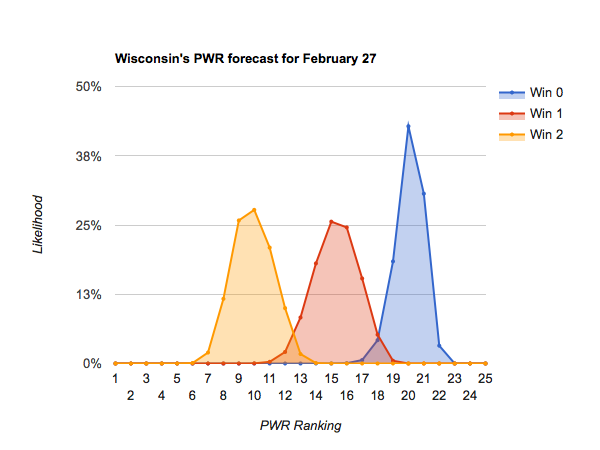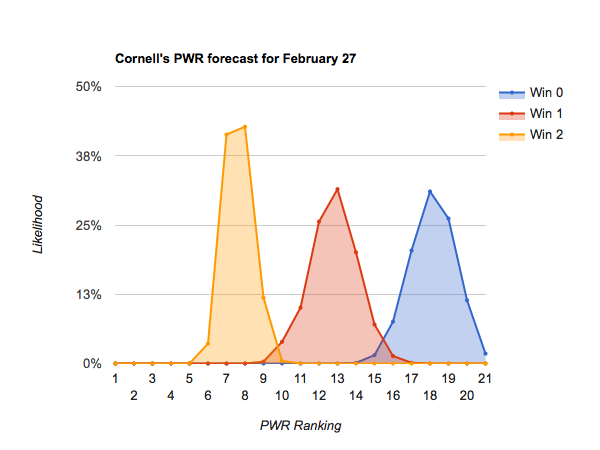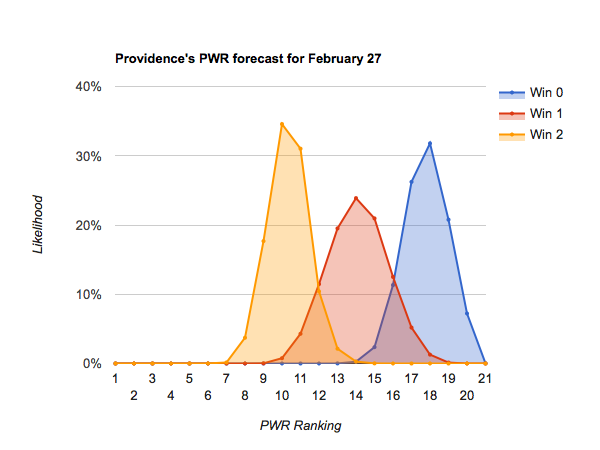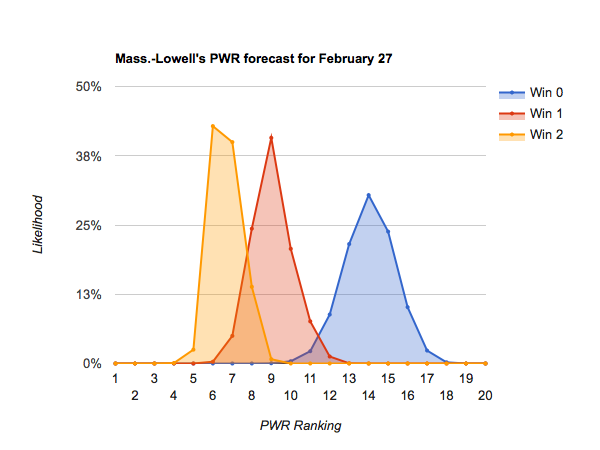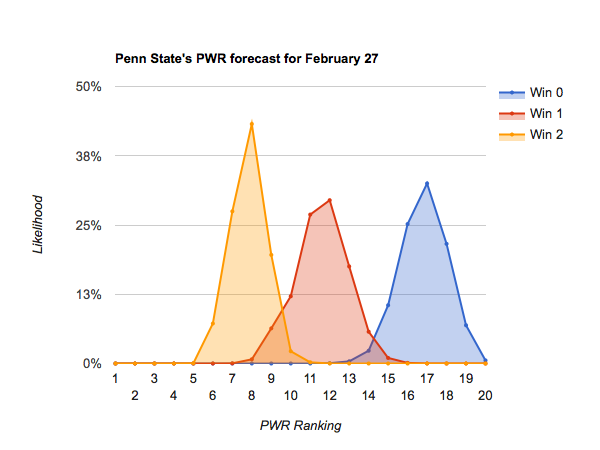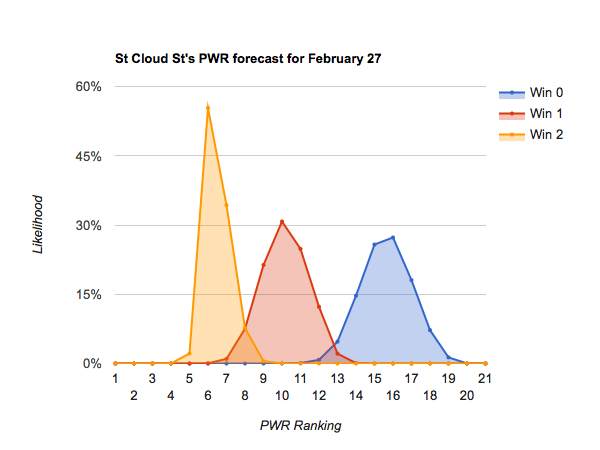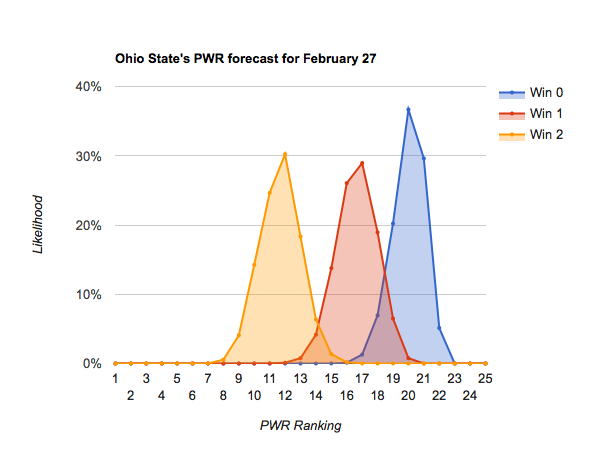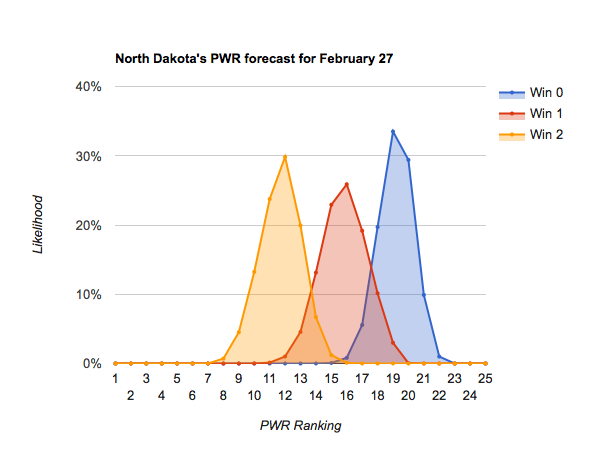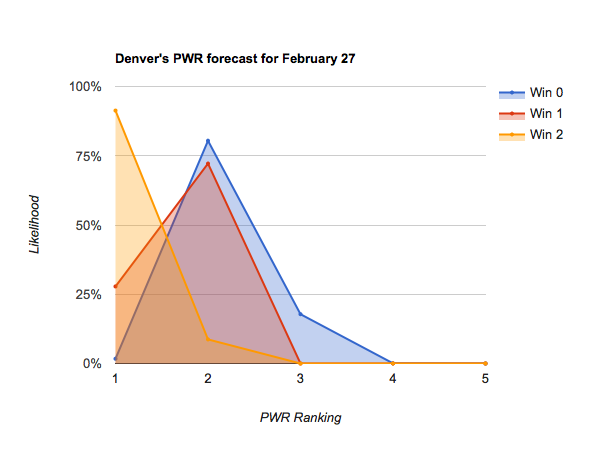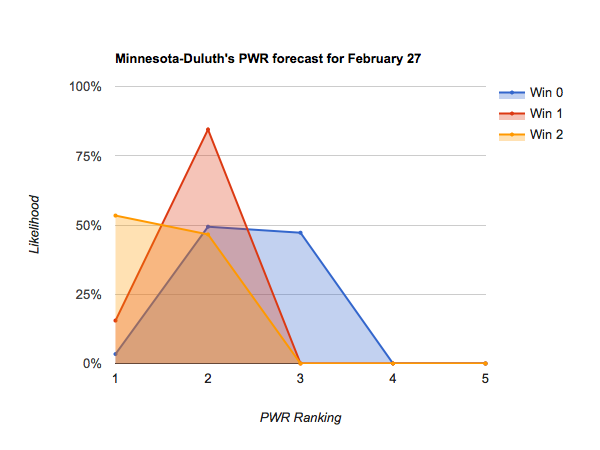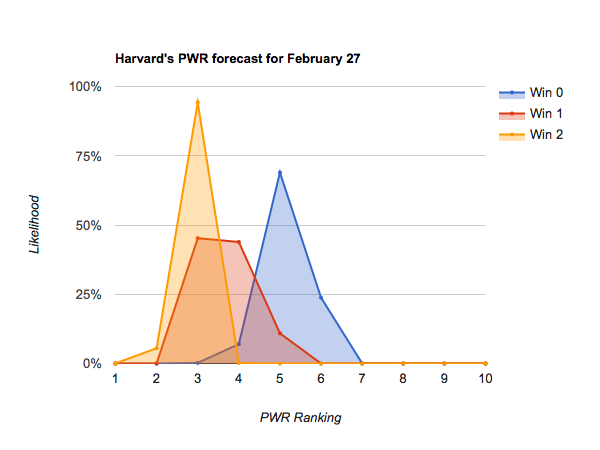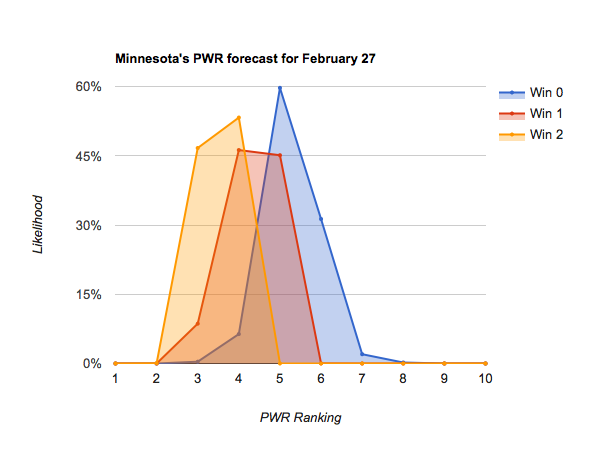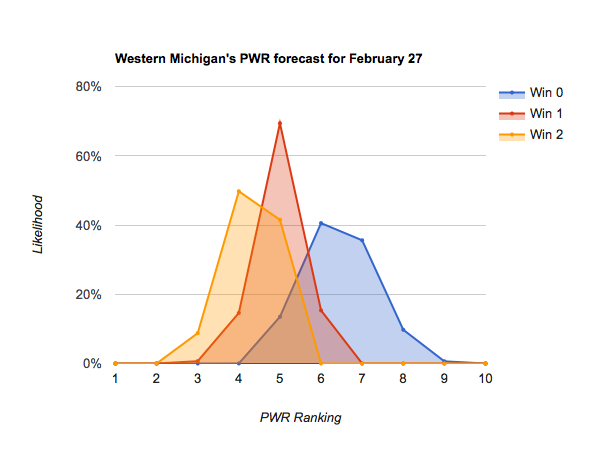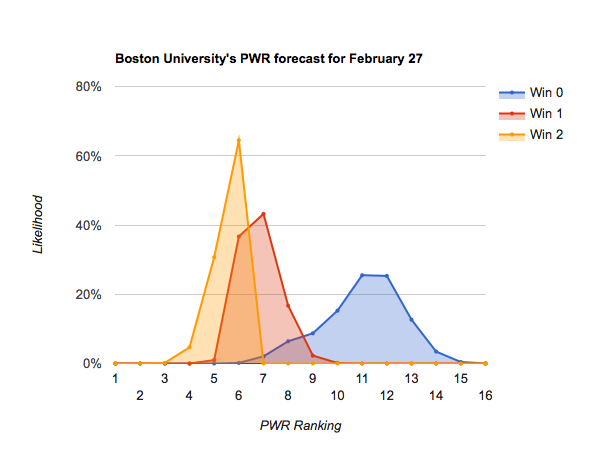For each of Cornell, Notre Dame, North Dakota, and Providence, missing the tournament requires a poor PWR ranking because of the success of the others.
All but idle Providence control their own fates, being able to guarantee an at-large bid with a single semi-final win.
With no additional wins, each is likely to land somewhere in the 9-16 range in PWR. To miss the NCAA tournament requires landing at the bottom of that range, requiring other teams in that range to do well. In addition to the other teams in this list doing well, Penn State, Ohio State, Air Force, and Boston College all have opportunities to move ahead of one of these teams that remains winless.
How Cornell misses
Cornell misses in about 6% of the scenarios in which they lose their semifinal game.
Here’s a scenario that pushes Cornell down to #16, so out of contention:
https://goo.gl/hFduxl
In this scenario, Cornell’s RPI falls enough and teams just below Cornell are successful enough that they pass Cornell in RPI and take the PWR comparison. Notre Dame, North Dakota, Providence, Penn State, Ohio State, Air Force, and Boston College each take the comparison, moving Cornell from 51 comparisons won to 44, enough to fall to #16 and out of contention.
Note that in that scenario, only the WCHA is won by a team that doesn’t finish in the top 15 in PWR. If only some of those teams pass Cornell, such that Cornell lands somewhere in the #12-15 range, enough conferences would need to be won by teams outside the top 15 for Cornell to still miss it.
How North Dakota misses
North Dakota misses in about 11% of the scenarios in which they lose their semifinal game.
Here’s a scenario that pushes North Dakota down to #16, so out of contention:
https://goo.gl/o7E4Pz
In that scenario, North Dakota’s RPI falls enough and teams just below the Hawks are successful enough that they pass North Dakota in RPI and take the PWR comparison. Providence, Penn State, Ohio State, Air Force, and Boston College each take the comparison, moving North Dakota from 49 comparisons won to 44, enough to fall to #16 and out of contention.
Note that in that scenario, only the WCHA is won by a team that doesn’t finish in the top 15 in PWR. If only some of those teams pass North Dakota, such that UND lands somewhere in the #12-15 range, enough conferences would need to be won by teams outside the top 15 for North Dakota to still miss it.
How Notre Dame misses
Notre Dame misses in about 4% of the scenarios in which they lose their semifinal game.
Here’s a scenario that pushes Notre Dame down to #16, so out of contention:
https://goo.gl/cUZqLw
In that scenario, Notre Dame’s RPI falls enough and teams just below the Irish are successful enough that they pass Notre Dame in RPI and the PWR comparison. North Dakota, Providence, Penn State, Ohio State, Air Force, and Boston College each take the comparison, moving Notre Dame from 50 comparisons won to 45, enough to fall to #16 (due to losing the RPI tie-breaker w/Providence) and out of contention.
Note that in that scenario, only the WCHA is won by a team that doesn’t finish in the top 15 in PWR. If only some of those teams pass Notre Dame, such that Notre Dame lands somewhere in the #12-15 range, enough conferences would need to be won by teams outside the top 15 for Notre Dame to still miss it.
How Providence misses
Providence is the only idle team with a shot at an at-large bid, though its scenario highly resembles those of Cornell, North Dakota, and Notre Dame with a semifinal loss. Providence misses the NCAA tournament in about 4% of possible scenarios.
Here’s a scenario that pushes Providence down to #16, so out of contention:
https://goo.gl/NVhyEE
In that scenario, Providence’s RPI actually rises a bit but teams just below Providence are successful enough that they pass Providence in RPI and take the PWR comparison. Penn State, Ohio State, and Air Force each take the comparison, moving Providence from 47 comparisons won to 44, enough to fall to #16 and out of contention. (Note that Providence already loses the comparison to BC, but BC moves ahead of Providence in PWR ranking in this scenario on the basis of Providence’s decline in comparisons won).
Note that in that scenario, only the WCHA is won by a team that doesn’t finish in the top 15 in PWR. If only some of those teams pass Providence, such that Providence lands somewhere in the #12-15 range, enough conferences would need to be won by teams outside the top 15 for Providence to still miss it.
